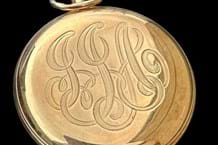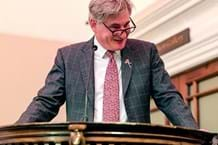The study, which follows on from TEFAF’s 2002 survey – the leading publication used globally for assessing the scope and importance of the world’s art market – showed a 95 per cent rise in the value of art traded annually, from €22.2bn (£16.6bn) to €43.3bn (£32.3bn). The sharp rise in the value of art as a commodity is highlighted by the fact that the number of transactions increased by only a quarter in that time, from 25.8m to 32.1m.
A key finding for the European trade is that, although the value of sales has increased, the European Union’s global share has fallen – a factor the study attributes to increased EU red tape and restrictive regulation.
TEFAF’s study, titled The International Art Market, A Survey of Europe in a Global Context, has been prepared by cultural economist Dr Clare McAndrew, editor of financial quarterly magazine Wealth.
Other key findings include:
• 2005-6 alone saw an increase in sales of 50.3 per cent
• Europe’s share of the market fell by 6.3 per cent while the US share rose by 2.4 per cent.
• The UK remains Europe’s largest art market, with a 60 per cent share, and retains 27 per cent of the global market.
• China has become the fourth largest market – overtaking Switzerland – with five per cent of the global take.
• Contemporary art has seen the biggest growth. The US has 47 per cent of this market – but China’s share now equals the UK’s at 20 per cent.
• China’s contemporary art market has increased by more than 100 times, with an increase of nearly ten times from 2005-6 alone.
• The balance of power has shifted from auction houses to dealers, who now have a 52 per cent share of global sales. Art fairs are seen as a burgeoning force among trading platforms.
• The EU market directly employs 220,500 people.
Perhaps one of the most important conclusions that Dr McAndrew draws is that the globalisation of the top end of the art market gives it more protection against recession.
Meanwhile, it is no surprise that the study names China, India and Russia as undergoing the biggest transformation in the past five years.
British Art Market Federation chairman Anthony Browne, a consultant on the study, told ATG: “Although the study shows that the art market has grown significantly since the last study, there are warning signs for Europe in that its global share has fallen – and Dr McAndrew has attributed this to the increase in red tape, costs and complexity associated with doing business in Europe.
“Hopefully those taking decisions on legislation and policy will take note of this and will take the necessary steps to increase Europe’s competitiveness in what is a very competitive environment.”
Copies of the report, costing €15 each excluding postage, may be ordered via the TEFAF website at www.tefaf.com
By Ivan Macquisten
New TEFAF study highlights Chinese phenomenon and threat to European market
THE size of the world art market all but doubled between 2002 and 2006, according to the latest survey commissioned by The European Fine Art Federation.




